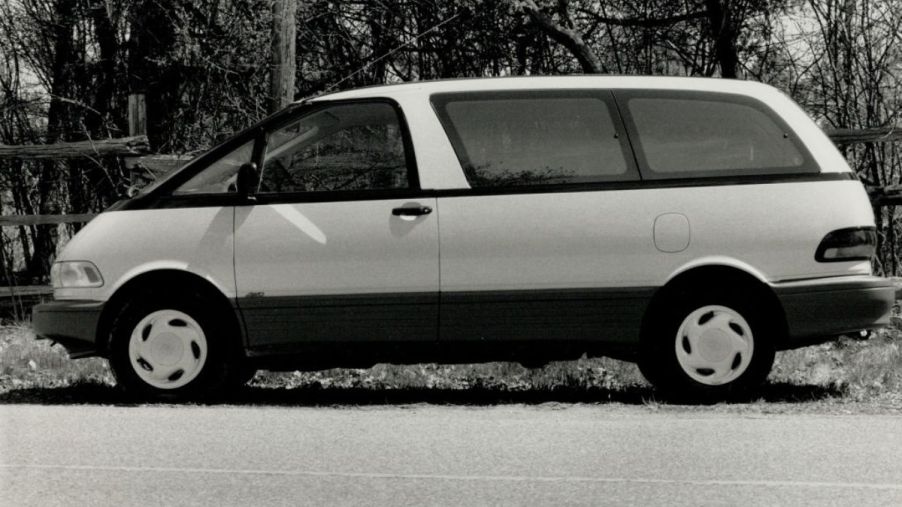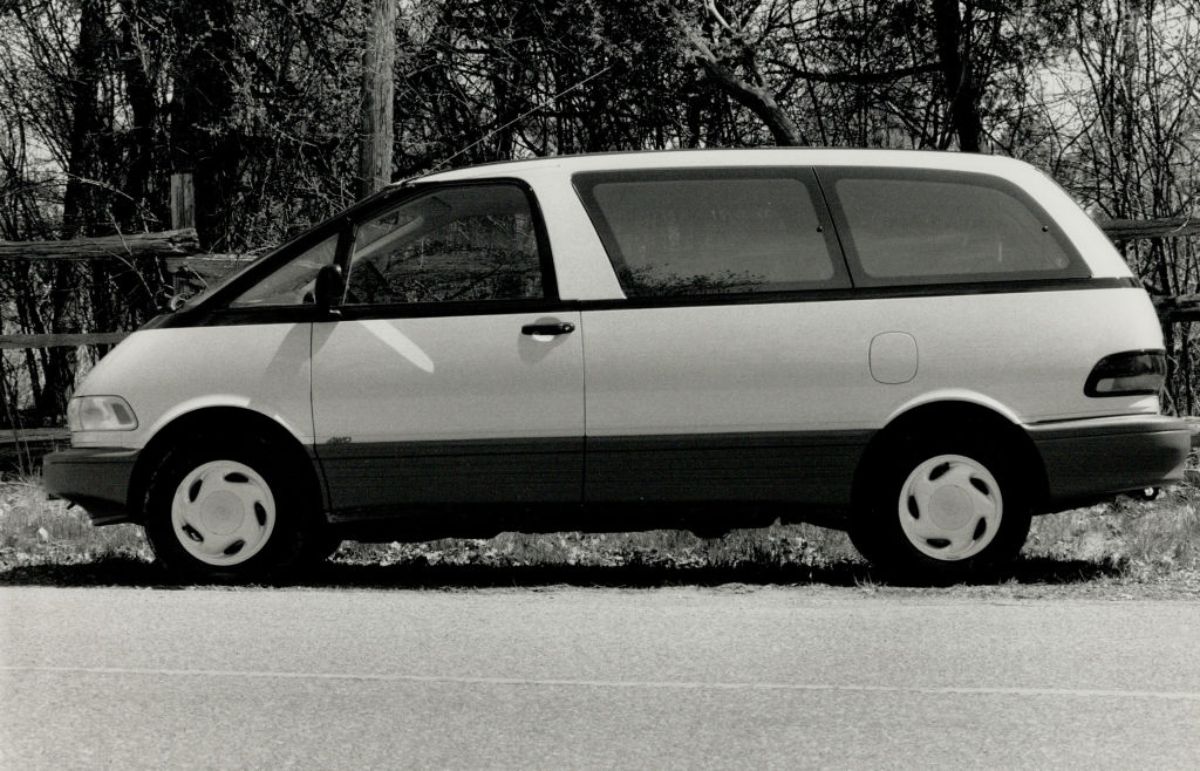
3 Design Flaws That Tanked Toyota Previa Sales in the U.S.
With its unique styling and superior engineering, the Toyota Previa stood out in the minivan crowd. However, it soon became apparent the Previa wasn’t gaining the same popularity in the United States as in Japan. Despite its groundbreaking design and features, the Toyota Previa had a few significant flaws that tanked its sales in the U.S. Let’s dive deeper.
A brief history of Toyota’s egg-shaped minivan

Toyota introduced the Previa in the United States in 1990. It was famous for its mid-engine design, which placed the powerplant beneath the front seats instead of under the hood. This design allowed for easy access to the engine for repairs, a more spacious interior, and a more stable and balanced ride. Toyota produced the Previa for American consumers until 1997, and it remained a popular choice in Japan until 2019.
Unfortunately, the Toyota Previa had 3 flaws that tanked its U.S. sales
The Toyota Previa lasted only a few years in America due to a few flaws that competitors capitalized on or improved upon.
- Underpowered engine: The Previa’s first major flaw was its lack of power. Due to the mid-engine setup, fitting more powerful engines into the compact design was challenging. According to Car and Driver, “One of Toyota’s goals was to build ‘the sports car of minivans,’ which is what motivated the company to pursue a mid-engine-rear-drive layout.” When the Previa debuted in 1990, it had a four-cylinder engine producing a mere 135 hp. Not until 1994 did the automaker add a supercharger option to address the power issue. However, the new feature still couldn’t keep up with rival minivans that packed more muscular V6 engines.
- Only one sliding door: Another significant flaw was the lack of two sliding doors. The Previa had only one, causing inconveniences for families with young children in car seats. Competitive minivans, such as the Dodge Caravan, Honda Odyssey, and Plymouth Voyager, had dual sliding doors, making rear-seat access easier and safer.
- Subpar fuel economy: The Toyota Previa also suffered from lower fuel economy than other minivans on the market, partly due to its mid-engine setup. Additionally, the all-wheel-drive system was a great selling point in Japan, but it was less necessary in the U.S. market, where weather and road conditions were less demanding. This setup was also costly, making the Previa less attractive for budget-conscious consumers.
Was the Toyota Previa a good minivan?
For the most part, the Previa was a good minivan despite its design flaws. Toyota’s attempt to re-envision the traditional minivan through the Previa started strong but couldn’t withstand the competition. However, it remains a beloved vehicle in Japan and a benchmark for carmakers wanting to push the envelope in vehicle design.
Perhaps someday, we’ll see a new and improved Previa that gains popularity worldwide. Until then, you might want to stick with Toyota’s more recent minivan, the Sienna.



